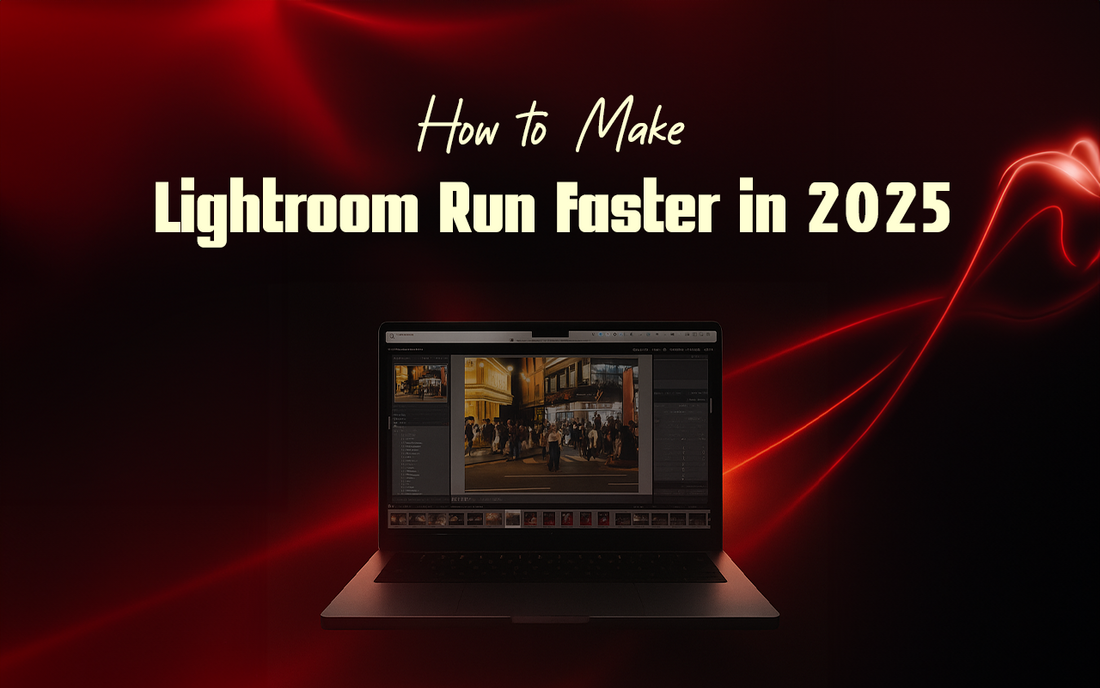
Lightroom Performance Optimization: How to Make Lightroom Run Faster in 2025
Share
If you’ve ever felt Lightroom dragging its feet while importing, culling, or editing your photos, you’re not alone. As photographers, our time is precious—and nothing is more frustrating than watching a loading bar crawl across the screen.
The good news? Adobe has released official guidance for improving Lightroom Classic performance, and by applying a few simple tweaks, you can dramatically speed up your editing workflow. Whether you’re editing a wedding gallery with thousands of RAW files or just a few shots from your latest photoshoot, these optimizations will help Lightroom run smoother, faster, and more reliably.
Why Lightroom Slows Down
Lightroom is powerful, but it’s also resource-heavy. Here are the main culprits behind slowdowns:
-
Large catalogs with tens of thousands of images
-
Heavy use of presets, plugins, and advanced adjustments
-
Limited RAM or storage bottlenecks
-
Outdated software or drivers
-
Continuous background syncing
The key is to reduce strain on Lightroom’s engine and optimize both your computer setup and Lightroom settings.
Optimize Your Computer for Lightroom
Lightroom performance starts with your hardware. Adobe recommends:
1. Use at Least 12 GB of RAM (Ideally 16 GB+)
Lightroom eats memory when loading RAW files, generating previews, and applying edits. If you’re still working with 8 GB, upgrading will make a big difference.
2. Store Catalogs on an SSD
Solid State Drives (SSDs) are much faster than traditional hard drives. Keep your Lightroom catalog and previews on an SSD for best results, and use a larger HDD for long-term photo storage.
3. Keep Graphics Drivers Updated
Outdated GPU drivers can cause lag when using GPU acceleration. Always install the latest drivers for your graphics card.
Optimize Lightroom Settings
Your settings inside Lightroom make a big difference too.
1. Build Smart Previews
Enable Smart Previews when importing. They’re smaller than RAWs and let you edit faster without sacrificing quality.
2. Manage Catalog Size
Split massive catalogs into smaller ones. Instead of one catalog with 100,000+ images, keep multiple catalogs by year or project.
3. Optimize Catalog Regularly
Go to File > Optimize Catalog. This cleans up Lightroom’s database and keeps it running efficiently.
4. Adjust Camera Raw Cache
In Preferences > Performance, increase the Camera Raw Cache size to at least 10 GB. This speeds up loading when switching between photos.
5. Tweak GPU Settings
If your GPU is powerful, enable GPU acceleration. If it causes crashes or lags, switch to “Custom” and test enabling/disabling individual options.
Workflow Tips to Boost Speed
-
Cull in Library mode instead of Develop to avoid long preview loads
-
Use minimal presets while culling; apply heavy edits later
-
Close other resource-hungry programs while editing
-
Regularly back up and clean your catalog to prevent corruption
FAQs
Does Lightroom run better on Mac or Windows?
Both can be fast if optimized. What matters most is RAM, SSD speed, and a solid GPU.
Should I use external drives for my catalog?
Keep your catalog and previews on your internal SSD for speed. External drives are best for long-term storage.
Is Classic faster than Lightroom CC?
Lightroom Classic offers more optimization controls and generally performs better for large catalogs.
Final Thoughts
Lightroom doesn’t have to feel slow. By upgrading your hardware where it matters, optimizing Lightroom’s settings, and following Adobe’s best practices, you can shave seconds off every task—and save hours across an entire editing session.
If you’re serious about faster editing, don’t forget that great presets also streamline your workflow. My premium Lightroom Preset Collections are designed to cut editing time while giving your photos a timeless aesthetic. Explore them in my shop and see how much easier editing can be.